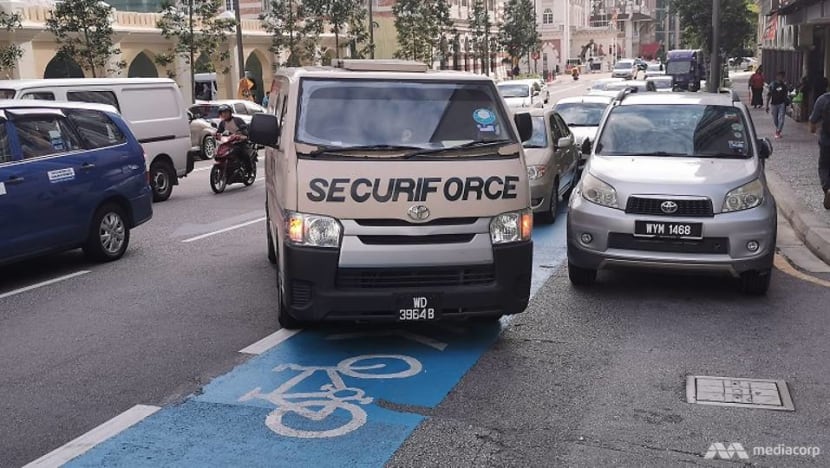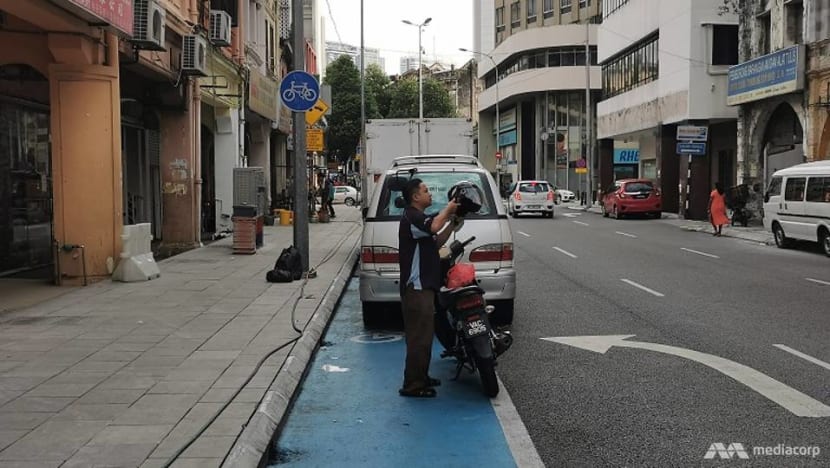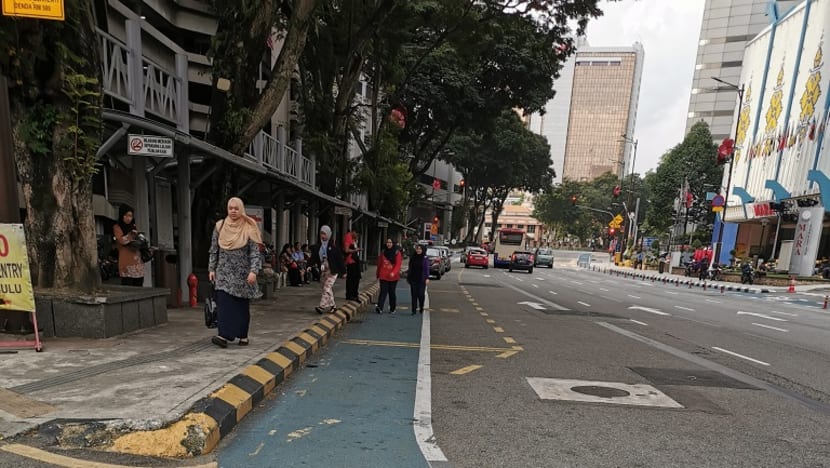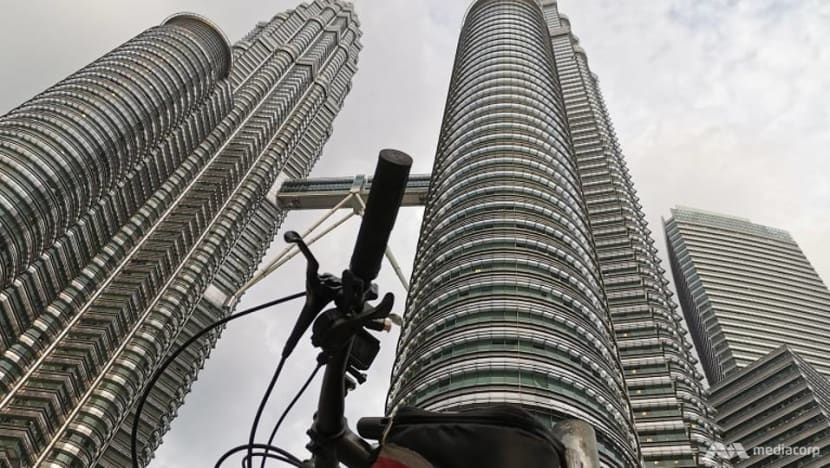Honks, obstacles and fumes: Cycling in downtown KL can be a frustrating experience
What is it like to travel along Kuala Lumpur’s 11km blue bicycle lane? CNA's Amir Yusof tested to see if it is a practical option for commuters.

A security van cutting across the bicycle lane to park along the sidewalk. (Photo: Amir Yusof)
KUALA LUMPUR: Cycling in downtown Kuala Lumpur during the evening rush hour? You must be crazy, a few locals told me.
With the pollution, congestion and weaving motorcycles, this was a recipe for accidents, they warned.
However, I wanted to try out the 11.86km bicycle loop that was drawn up in the central areas of the city in February last year.
The lane, demarcated by blue paint, was introduced by the Kuala Lumpur City Hall (DBKL) to connect key landmarks of the capital city and encourage commuters to cycle.
Launched at the World Urban Forum in 2018, it was part of DBKL’s green initiatives showcase.
While the lane currently only serves the city centre, it was reported last month that DBKL plans to link the central loop to the suburbs by next year.
The lanes will link Kampung Baru, a traditional Malay neighbourhood at the fringe of Petronas Twin Towers to the suburb of Setapak, around 15km north of the city.
DBKL executive director Mohd Najib Mohd was quoted as saying that commuters would take just 20 minutes to cycle from their homes in Taman Melawati, Setapak to the bicycle lane in central KL.
The city also has "car-free mornings", which bars vehicles from entering the central area on every first and third Sunday of the month to make way for people to cycle, jog and skate for two hours.
These seemed to be good initiatives and I decided to get a sense of how feasible it is to cycle in this main part of the city, particularly as it continues to be plagued by traffic congestion on the roads and human congestion on the trains.
I started out at the Central Market at around 5pm on Thursday (Jun 13). The roads were already packed to the hilt as commuters began to head home.
As I put on my helmet, I drew stares from drivers who were stuck in the endless jam and riders slaloming past on their motorbikes. Clearly, saddling up on this designated bicycle lane was an oddity.

My trip started off badly, with cars, vans and motorcycles parked on the bicycle lane, blocking my path near Jalan Hang Kasturi.
At each obstacle, I had two choices — cycle on the main road and jostle with the motor vehicles, or lug my bicycle onto the pedestrian pavement and push it.
I cursed at each obstacle and began counting the number of vehicles that were blocking the lane. But I soon lost count.
In spite of signs along the way indicating that vehicles parked on the bicycle lane would be fined RM500 (US$119), no one seemed to care.
READ: Best places to go on a cycling holiday in Southeast Asia

Even those who were supposedly in charge of enforcing the law were oblivious. A police officer who parked his police van on the lane barely looked up as I heaved my bicycle onto the narrow pedestrian pavement to squeeze past shophouses.
It was bizarre that a car was travelling on the bicycle lane in the opposite direction of the traffic flow. The driver honked when he saw me cycling towards him.
Halfway through my journey, it was clear that this was going to be a fruitless experience as I was spending more time pushing the bicycle than riding it.
On the rare occasions that I did ride on the saddle during the journey, I found that some stretches of the bicycle lane were not well connected, hence posing safety issues.
READ: Wheel woes: The rise and fall of Singapore's bike-sharing industry
The blue paint had worn off at a few junctions, and I was forced to look around frantically for any hint of blue on the nearby streets to continue the journey.
On one particular left turn at a traffic light, the bicycle lane cut diagonally across the main road, leading to a situation where I was blocking a horde of motorcyclists when the light turned green.
I raised my hands apologetically and the riders courteously waited for me to pass. At some parts of the journey, like at Jalan Raja Laut, the bicycle path overlapped with the public bus lane.

As I was cycling, I could feel buses gaining on me, emanating heat and exhaust fumes. I stopped at the side to give way, while holding my breath.
Eventually, I arrived at my destination, the Twin Towers, at around 5.45pm.

After a long and tiring journey, the two buildings looked more majestic than usual. I snapped some pictures before a security officer told me that no bicycles were allowed within the area.
To take around 45 minutes between the two points around 7km apart is not ideal. Even joggers can make the same journey in a shorter time.
In spite of the difficulties, the ride did take me past the city's iconic landmarks: Dataran Merdeka, KL Tower and Masjid India. Tourists can definitely make use of the lane to tour the city.
For cycling to be a viable option, however, authorities should conduct stricter enforcement and fine vehicles that park along the cycling lane.
Drivers and motorcyclists should also note that the lane is a no-go zone, instead of a space to weave through congestion.
Throughout the entire journey, I did not come across any fellow cyclists. I wonder if the lane, constructed at a cost of RM4 million, is being utilised frequently.

It is also worth noting that bike-sharing is no longer a commuting option in KL. Mobike and oBike used to operate dockless bicycle fleets throughout the Klang Valley, but their business ventures have failed.
Making cycling as a viable mode of transport would be a big boost to KL's green initiatives.
The city stands to benefit from having more cyclists on the road. It already has a bicycle lane. Now, it must clear it for bicycles.














